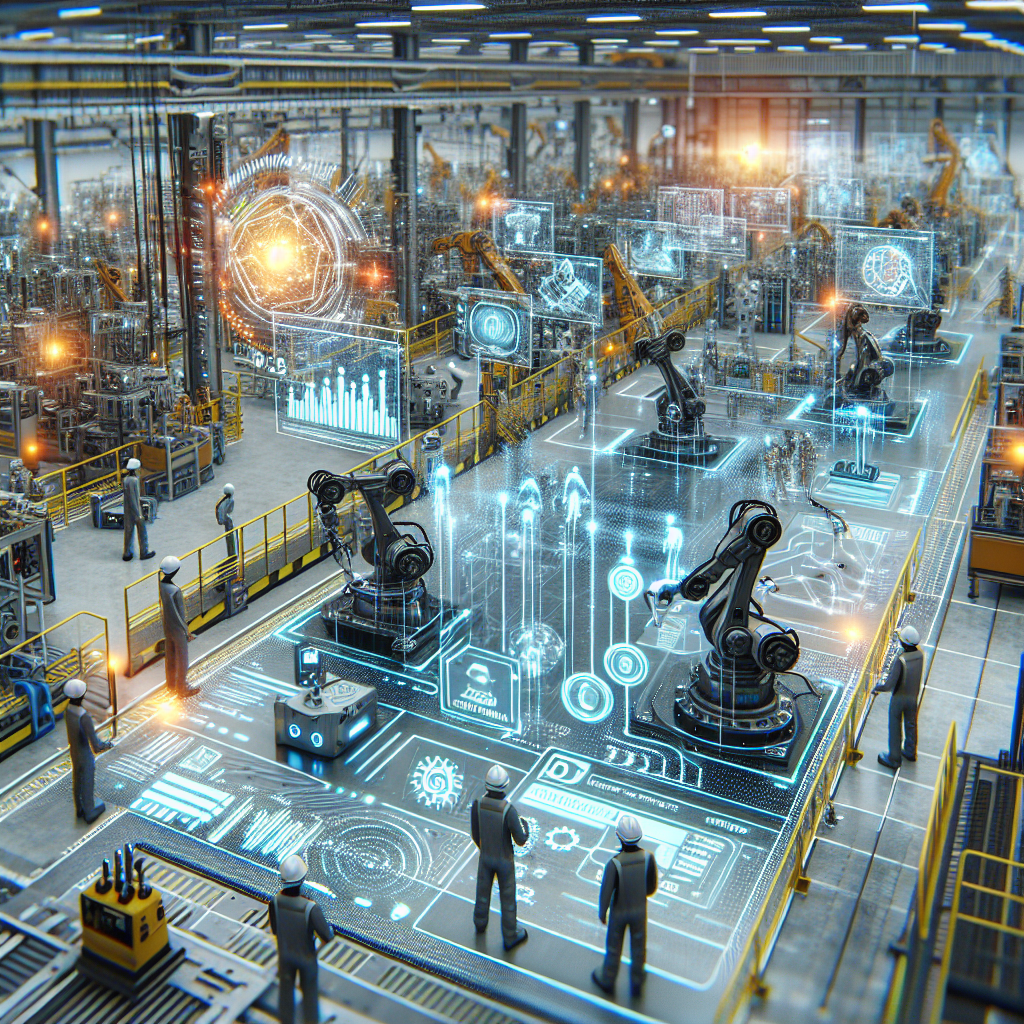In recent years, the integration of artificial intelligence (AI) and augmented reality (AR) technologies has been revolutionizing the manufacturing industry. These advanced technologies are helping manufacturers streamline processes, improve efficiency, and enhance productivity. By harnessing the power of AI and AR, manufacturers are able to optimize their operations, reduce downtime, and deliver high-quality products to customers. In this article, we will explore the impact of AI and AR in manufacturing and discuss how these technologies are reshaping the industry.
Artificial intelligence is a branch of computer science that focuses on creating intelligent machines that can perform tasks that typically require human intelligence, such as learning, reasoning, problem-solving, and perception. In the manufacturing industry, AI is being used to automate and optimize various processes, from production planning and inventory management to quality control and predictive maintenance. By analyzing large amounts of data and identifying patterns, AI systems can make data-driven decisions in real-time, leading to improved operational efficiency and cost savings.
One of the key applications of AI in manufacturing is predictive maintenance. By using machine learning algorithms to analyze equipment data and predict when a machine is likely to fail, manufacturers can proactively schedule maintenance and avoid costly downtime. This not only reduces maintenance costs but also extends the lifespan of equipment, leading to higher overall equipment effectiveness (OEE) and increased productivity.
Another area where AI is making a significant impact in manufacturing is quality control. AI-powered systems can detect defects and anomalies in products with high accuracy, ensuring that only high-quality products are shipped to customers. By automating the inspection process, manufacturers can reduce the risk of human error and improve product quality, leading to higher customer satisfaction and lower product returns.
In addition to AI, augmented reality is also playing a crucial role in transforming the manufacturing industry. AR technology overlays digital information, such as 3D models, instructions, and data, onto the physical world, enabling operators to access real-time information and guidance while performing tasks on the shop floor. By using AR-enabled devices, such as smart glasses or tablets, operators can visualize complex assembly instructions, troubleshoot issues, and receive training in a hands-free and interactive manner.
One of the key benefits of AR in manufacturing is the ability to improve worker productivity and efficiency. By providing operators with real-time information and instructions at the point of use, AR technology reduces the need for paper-based manuals and minimizes the risk of errors. This not only speeds up the assembly process but also enhances the quality of work, leading to higher throughput and lower production costs.
Another advantage of AR in manufacturing is remote assistance. With AR-enabled devices, operators can collaborate with experts or technicians located in different locations to troubleshoot issues or receive guidance in real-time. This can significantly reduce travel costs and downtime, as experts can remotely diagnose and resolve problems without the need to be physically present on-site.
Overall, the integration of AI and AR technologies in manufacturing is helping manufacturers drive innovation, improve efficiency, and stay competitive in today’s fast-paced market. By harnessing the power of AI for predictive maintenance and quality control, and leveraging AR for worker productivity and remote assistance, manufacturers can optimize their operations, reduce costs, and deliver high-quality products to customers.
FAQs:
Q: How can AI improve predictive maintenance in manufacturing?
A: AI can improve predictive maintenance in manufacturing by analyzing equipment data and predicting when a machine is likely to fail. By proactively scheduling maintenance based on AI-generated insights, manufacturers can avoid costly downtime and extend the lifespan of equipment.
Q: What are the key benefits of using AR in manufacturing?
A: The key benefits of using AR in manufacturing include improved worker productivity and efficiency, enhanced quality control, and remote assistance for troubleshooting and training. AR technology enables operators to access real-time information and instructions at the point of use, leading to higher throughput and lower production costs.
Q: How can manufacturers leverage AI for quality control?
A: Manufacturers can leverage AI for quality control by using machine learning algorithms to detect defects and anomalies in products with high accuracy. By automating the inspection process, manufacturers can ensure that only high-quality products are shipped to customers, leading to higher customer satisfaction and lower product returns.

